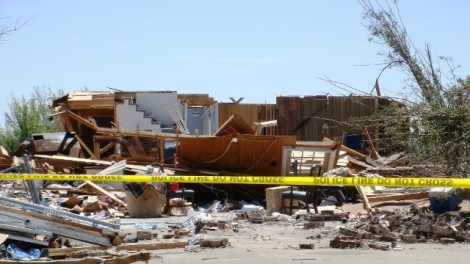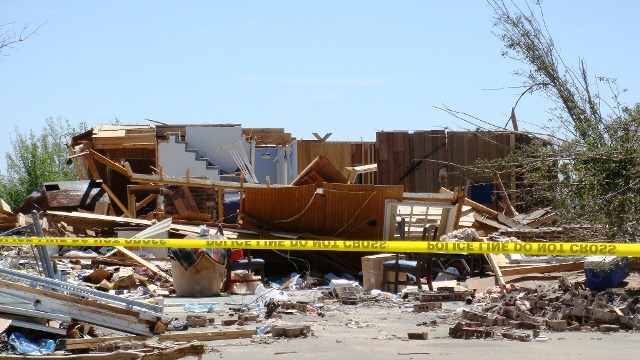Over the last three weeks, we’ve seen the fallout from Hurricane Sandy hit the working poor and middle class the hardest. Droughts, heat waves, and wildfires also afflict the lower classes far more than the wealthy, according to a Center for American Progress analysis of extreme weather events in 2011 and 2012.

abracadebraDamage in Alabama from a 2011 tornado.
Most of these extreme weather events typically harmed counties with household incomes below the U.S. median annual household income of $51,914:
- Floods damaged households in affected counties with average household incomes of $44,547 annually — 14 percent less than the U.S. median income
- Drought and heat waves affected counties with households that earned an average of $49,340 annually — roughly 5 percent less than the U.S. median income
- Wildfires, tornadoes, and severe thunderstorms devastated areas with households that earned an average of $50,352 annually — 3 percent less than the U.S. median income
In fact, tropical storms and hurricanes were the only types of extreme weather events that affected more-well-off areas, on average, since January 2011.
The full report is here [PDF], with details on some of the poorest, hardest-hit states — states that, as it happens, tend toward the politically conservative, such as Texas, Missouri, Oklahoma, Tennessee, Kansas, Alabama, Mississippi, North Carolina, and Arkansas.
For many poor Americans, there’s no air-conditioning to counteract extreme heat, and there’s not enough heating oil to counteract extreme cold. Flood insurance is too expensive (and the federal program is struggling). After extreme weather events, lower-income people are left to pick up the pieces on their own.
Still, for disaster-affected communities, there might be a little hope in new innovations. After Sandy, the company Consolidated Solar set up three portable solar generators in the hard-hit Rockaways. Forbes reports:
These units may not provide all of the benefits of the more extensive and powerful micro-grid (micro-grids are isolated mini systems that can be disconnected from a dead power grid), but they are mobile, independent, quick to set up, can be daisy-chained to increase power output, and don’t require a huge infrastructural commitment. And they are relatively cheap. For communities that may not be able to commit resources to a full micro-grid, or may take years to set one up, this type of resource is worth considering.
Those things are cool! But a homemade bike generator will cost you far less, power your gadgets, and keep you warm in winter.


